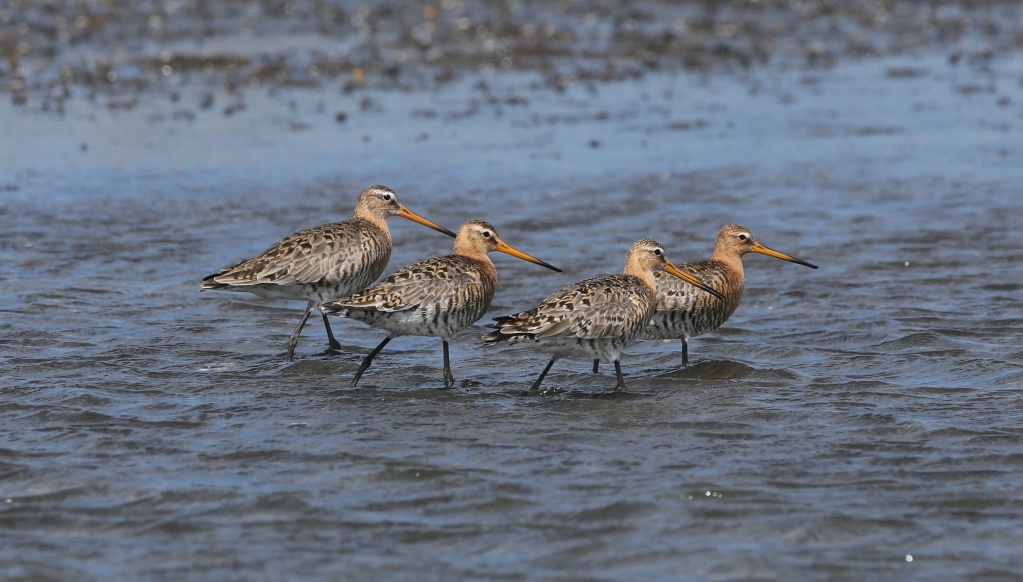- About the company
- Safety and Environment
- Social Performance
- Media
- Tenders
- Jobs and career
- Vacancies
- Students: Internship
- Graduate development programme
- Traineeship Programme
- Energy cup case championship
- Contact us
- Home page
- Safety
- Environmental Protection
- Protected Bird Species Monitoring
Protected Bird Species
Birds are an essential component of land and marine ecosystems. Over 400 species of birds are found on Sakhalin Island alone. Of these, about 160 species nest in the region. Extensive ornithological studies were performed along the planned pipeline route and production assets prior to the commencement of the Sakhalin-2 project’s Phase 2 construction activities. Detailed examination of species composition and quantitative characteristics of the avifauna identified the most significant areas with high species diversity and located nesting sites of protected bird species listed in the Red Books of the Russian Federation and Sakhalin Oblast. Further monitoring during the construction and operational stages focused on assessing the abundance and distribution of rare and protected bird species, which are the most vulnerable and susceptible to man-made impact.
Environmental Monitoring Near Production Facilities
The objective of the monitoring is to assess the impact on the populations and habitats of rare and protected bird species during the operation and construction of new Sakhalin Energy LLC assets.
The following items are addressed during the research and analysis of collected data:
• determination of species composition and density of background bird population, assessment of the condition of ornithological complexes and basic habitats;
• detection and mapping of nests and nesting areas of endangered and protected bird species dwelling in areas of potential impact from production assets;
• mapping of locations where rare and protected bird species have been spotted; collecting data on species, gender, number, behaviour, and usage of land (habitat) area;
• assessment of the condition of rare and protected bird species, in particular key monitored species including the Sakhalin dunlin and the Aleutian tern at the Chayvo Spit; the Siberian grouse and owls near the OPF; Latham’s snipe near the Prigorodnoye production complex; Latham’s snipe, rare owl species, the yellow-breasted bunting, and the mandarin duck along the pipeline route;
• comparative analysis based on the results obtained during baseline surveys and monitoring in previous years and the development of remedial environmental measures to mitigate the impact of the Company’s ongoing operations on the avifauna.Prigorodnoye Production Complex
Over the period of monitoring near the plant, including in the adjacent offshore area, 33 protected species were spotted, the most important of which were Latham’s snipe and the Japanese robin. As a result of reclamation works carried out in the areas of materials and soil storage in the vicinity of the LNG plant upon its construction, additional meadow areas appeared, suitable for Latham’s snipe nesting. Since the plant’s commissioning, the numbers of Japanese snipe have been steadily increasing. At the moment, breeding pairs occupy all suitable habitats in the area around the plant. The density of this species is expected to stabilise and subsequently decrease with the emergence and development of tree vegetation in the meadow areas.
Young and adult individuals of the long-billed murrelet and the white-tailed eagle were observed there in the summer period, indicating that both species were nesting near the LNG plant.
Pipelines
As a result of long-term monitoring along the pipeline route, 46 protected bird species have been observed. Most of them are registered while crossing the island during seasonal migrations. Greater attention is being paid to the status of nesting species such as Asian Siberian spruce grouse, mandarin duck, yellow-breasted bunting, Japanese snipe, green sandpiper, Japanese quail, Japanese waxwing, other diurnal birds of prey, and owls. Given the wide variety of bird habitats along the pipeline route, the birds are distributed very unevenly, therefore, monitoring is carried out at selected sites.
The long-term monitoring of Latham’s snipe has revealed the species’ gradual resettlement to the north of the island. The emergence of grassy vegetation on the pipeline route in the forest area has had a positive effect on their numbers. The snipe has gradually populated the pipeline right-of-way in the southern and central parts of the island, with recent occurrences in the northern area. Despite its high abundance, this species is listed as protected due to its limited distribution.
The monitoring area in the valley of the Lesnaya river is used for assessing the abundance of the mandarin duck, while the Tymovsk valley serves for tracking the condition of the nesting aggregation of the yellow-breasted bunting, the Japanese quail, and the great grey owl. The northern stretch of the pipeline crosses the habitats of the Japanese waxwing, the Siberian spruce grouse, the northern hawk owl, the boreal owl, and the Eurasian pygmy owl.
Long-term avifauna monitoring along the pipeline route has shown that the composition of protected nesting bird species is stable, which indicates a lack of impact. The population of owls demonstrates yearly fluctuations linked to the abundance of mouse-like rodents that they prey upon.
Onshore Processing Facility
36 bird species listed in the Red Books of the Russian Federation and Sakhalin Oblast have been registered in the vicinity of the OPF. The area adjacent to the OPF is highly populated by such rare species as the Siberian spruce grouse, the long-billed murrelet, the northern hawk owl, the Eurasian pygmy owl, and the boreal owl.
During spring, the abundance of Siberian spruce grouse males is assessed at lekking sites, and owls are counted at breeding sites. Studies of the Siberian spruce grouse using individual markings have shown that males are extremely conservative in choosing a habitat: they occupy the same lekking sites year after year, which makes this species extremely vulnerable. The density of the Siberian spruce grouse population in the OPF area corresponds to the density of this species in optimal habitats of their distribution area on the mainland. During the operation phase, the monitoring revealed a decrease in the number of Siberian spruce grouse, which is associated with the reduction of forest habitats caused by the man-made impact of a third party.
Chayvo Spit
The Chayvo Spit occupies a special place in the bird monitoring programme since it is a part of the Lagoons of North-Eastern Sakhalin, a key ornithological territory of international significance. The reason for this is that the migration routes of gulls, ducks, and waders lie along the spit; moreover, the Chayvo Spit attracts wetland birds as a nesting site. Over the years of monitoring the Chayvo Spit area, 198 bird species have been registered in the summer periods, including 42 species listed in the Red Books of the Russian Federation and Sakhalin Oblast.
During surveys at the pipeline route design stage, colonies of the Sakhalin dunlin and the Aleutian tern – both protected species – were discovered in the pipeline landfall area. To reduce the impact of the project on these species, the pipeline route was diverted to bypass the colonies, and the subsequent construction was suspended for the entire nesting period. Certain activities were not permitted unless nesting sites were mapped and confirmed to be absent from the work site. Subsequent monitoring of the nesting colonies shows that pipeline routing has not affected the number of breeding pairs of the Sakhalin dunlin and the Aleutian tern on the Chayvo Spit. The Sakhalin dunlin has shown a high level of attachment to nesting sites, while the Aleutian tern displays significant fluctuations in abundance and colony distribution due to its nesting patterns.
Nests of the red-necked phalarope, the long-toed stint, the horned grebe, the American scoter, the common goldeneye, the red-breasted merganser, the black-throated diver, the red-throated diver, and other species have been discovered in the potential pipeline impact area. Most of them breed at the southern limit of their breeding range, which raises the importance of spit habitat conservation for birds.
The monitoring of terrestrial bird communities shows stability in the dominance structure. The observation of passerine birds has revealed a high density of field larks, green-headed and black-backed wagtails, dusky warblers, Indian pipits, and Middendorff’s grasshopper warblers.

- Safety and Environment



